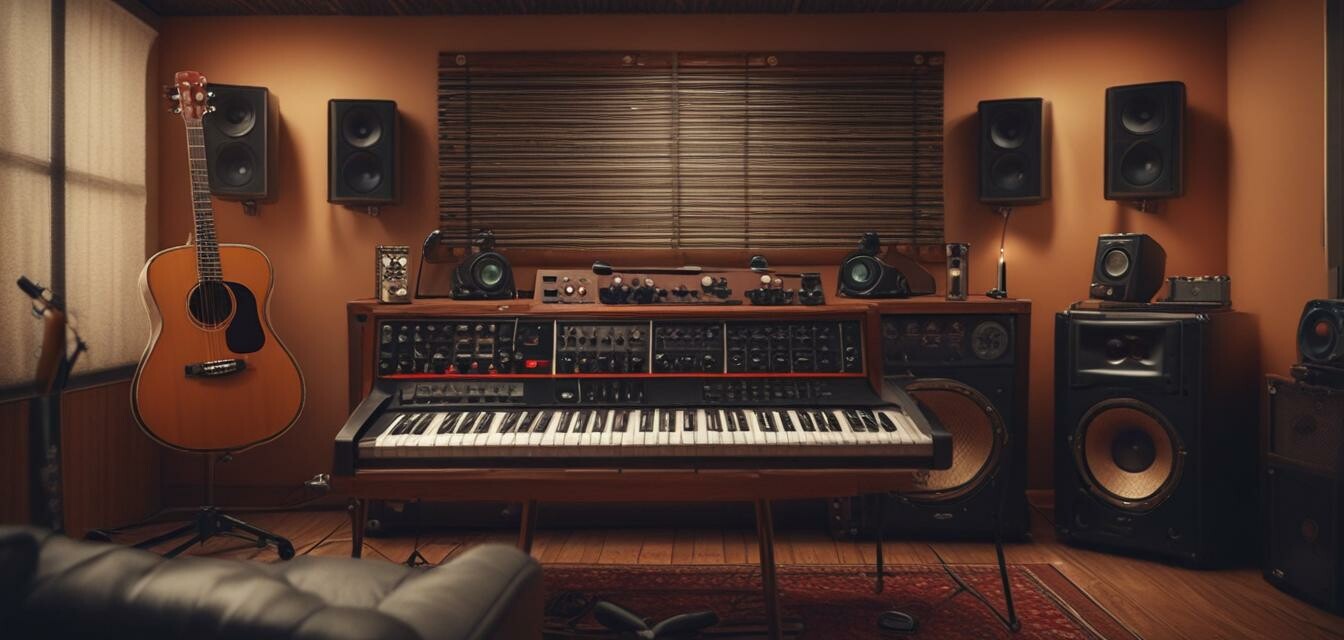
Essential gear for home recording with Fender guitars
Key takeaways
- Fender guitars are versatile for various genres in home recordings.
- Quality microphones greatly enhance recording quality.
- Choosing the right software is vital for editing and mixing.
- Additional gear like audio interfaces and headphones are essential.
Creating high-quality music recordings at home has become increasingly accessible, especially with the right tools. If you're a proud owner of a Fender guitar, you already possess an incredible instrument that can help you craft your sound. This guide will walk you through the essential gear you'll need for successful home recordings, including various microphones, recording software, and accessories that complement your Fender guitar setup.
Microphones: Choosing the right option
The microphone is one of the most important pieces of equipment for capturing the sound of your Fender guitar. Here, we break down some popular options:
| Type of Microphone | Best for | Price Range |
|---|---|---|
| Dynamic Microphone | Live performance and studio recording | $100 - $300 |
| Condenser Microphone | Vocals and acoustic instruments | $150 - $800 |
| Ribbon Microphone | Smooth recordings with a warm sound | $300 - $2000 |
Dynamic microphones
Dynamic microphones are robust and can handle high sound pressure levels, making them ideal for various settings. They're also great for recording guitars due to their ability to capture the sound at high volumes without distortion.
Condenser microphones
Known for their sensitive and natural sound, condenser microphones are excellent for capturing the nuances of your Fender guitar. They tend to be more expensive but can dramatically improve the overall quality of your recordings.
Ribbon microphones
Ribbon microphones provide a vintage sound that is rich and warm. They're best for studio environments where delicate sound capture is required, although they come at a higher price point.
Audio Interfaces: Linking your gear
An audio interface is essential for connecting your Fender guitar and microphone to your computer. It converts the audio signals into a digital format that can be recorded and processed. Here’s a quick comparison of popular audio interfaces:
| Model | Inputs | Price |
|---|---|---|
| Focusrite Scarlett 2i2 | 2 | $170 |
| PreSonus AudioBox USB 96 | 2 | $100 |
| Universal Audio Apollo Solo | 2 | $550 |
Recording Software: The backbone of your setup
Choosing the right recording software, commonly referred to as a Digital Audio Workstation (DAW), is pivotal for editing and mixing your tracks. Here are a few popular options:
- GarageBand: Great for beginners, easy to use interface, only for macOS.
- Audacity: Free, open-source option, with basic features for audio editing.
- Pro Tools: Industry-standard software with advanced features, great for professional recordings.
Other essential gear
Aside from microphones and software, other equipment enhances your home recording experience:
- Headphones: Studio headphones are important for accurate sound monitoring.
- Microphone stands: Keep your microphones at the right height and distance from the sound source.
- Cables: Quality cables minimize interference and ensure clarity in sound.
- Acoustic treatment: Improve your recording environment to reduce unwanted sounds and echoes.
Conclusion
Recording with Fender guitars at home can be incredibly rewarding. By investing in the right gear, such as quality microphones, an audio interface, and a reliable DAW, you're setting yourself up for success. Don't forget to check out our [Buying Guides](https://www.fenderguitarreviews.com/blog/buying-guides) for more insights on acquiring the perfect equipment for your musical journey.
Tips for beginners
- Start with essential gear and gradually upgrade.
- Experiment with microphone placements to find the best sound.
- Learn the basics of your recording software through tutorials.
- Take breaks during recording sessions to maintain focus and creativity.
Pros
- Versatile sound suitable for various genres.
- Accessible recording process with the right tools.
- Potential for high-quality home recordings.
- Various gear options available to suit your needs.
Cons
- Initial cost for quality equipment can be high.
- Learning curve for software may be steep.
- Room acoustics may require treatment for optimal sound.